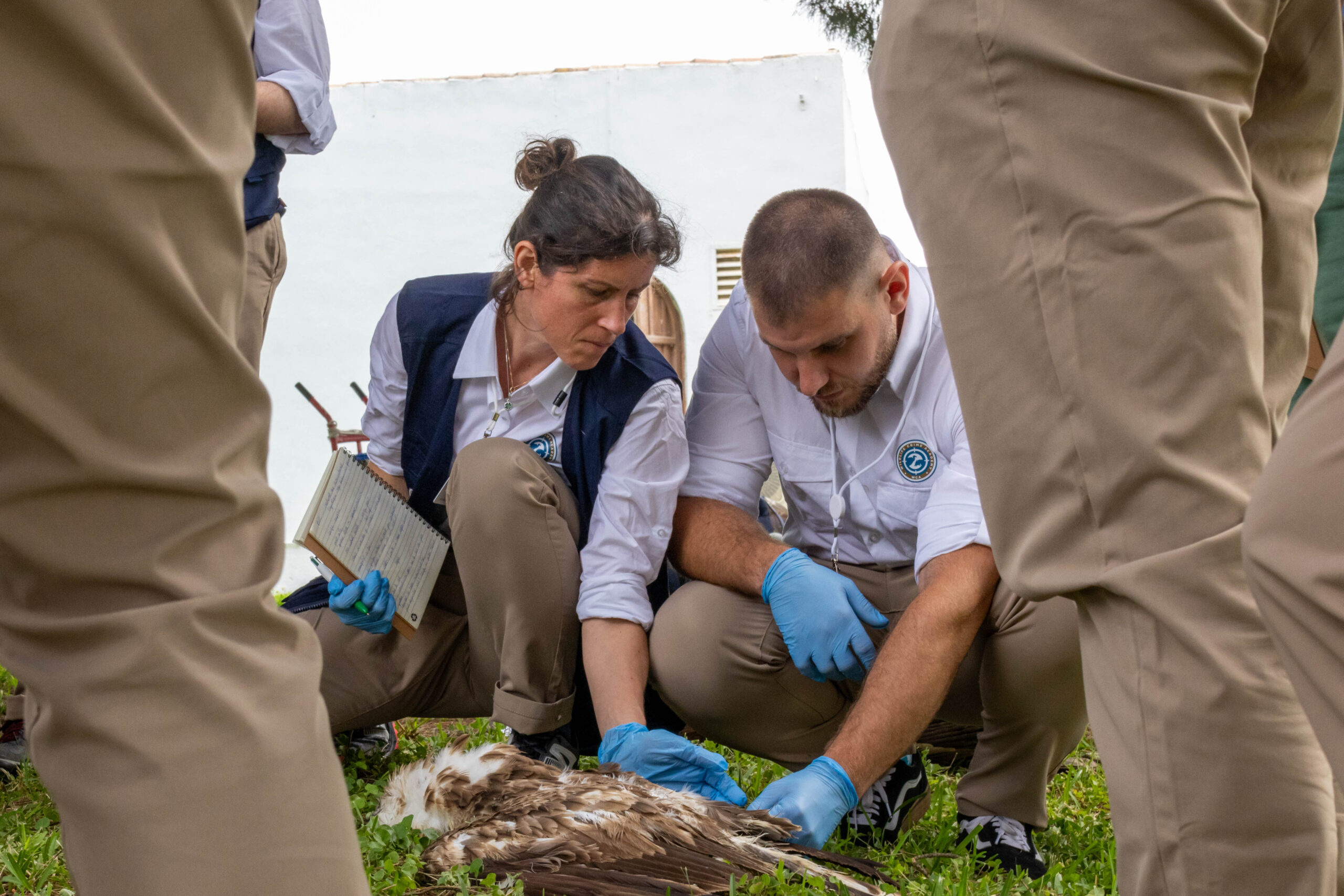SAVE – Saving Asia’s Vultures from Extinction is a consortium of 25 organisations working together for the recovery and protection of threatened vultures in Asia. On 24 January 2023, an online Open Day was organised by the consortium, where tagging methods, conservation progresses and country updates were shared and discussed. Our own Julien Terraube, VCF’s Research Officer, attended the conference and shared with us the main takeaways.
News about vultures from 6 countries in south Asia
To kickstart the meeting, Chris Bowden, SAVE Programme Manager from the Royal Society for the Protection of Birds (RSPB), welcomed the participants to the structure of the conference and introduced the different speakers. Members of local conservation NGOs from 6 south-Asian countries – Nepal, Myanmar, Cambodia, Bangladesh, Pakistan and India – presented their annual updates. All updates followed the same structure, including updates on the breeding centres; in-situ monitoring and conservation and vulture tagging (occurring for the first time in Bangladesh); NSAIDs surveys and enforcement of the Diclofenac ban; awareness and advocacy activities to improve vulture conservation outcomes.
NSAIDs and Meloxicam
Over the past decades, the common and widespread veterinary use of diclofenac was the main cause of vulture decline in South Asia. Diclofenac has been banned since 2010, but its illegal use, especially in Myanmar, continues to threaten vulture populations. There are, however, other legal NSAIDs (Non-steroidal Anti-inflammatory Drug) such as ketoprofen, aceclofenac, carprofen, flunixin, nimesulide and phenylbutazone, that are harmful to vultures, hindering populations’ recovery. An incredible amount of work is being done in terms of advocacy and lobbying to change this situation, including the involvement of veterinary practitioners.
Meloxicam is a vulture-safe NSAID, according to SAVE. Strong progress has been seen in Nepal where meloxicam is the main NSAID used (93%), while other harmful NSAIDs were found in only 7% of the cases. Cambodia was the only country to highlight illegal poisoning (non-NSAID) as the major threat to their vulture populations.
Road surveys and recovery rates
It seems that the population decline has been stopped overall. However, countries face contrasting recovery rates, with road survey counts showing an increase of White-rumped Vultures (Gyps bengalensis) in 2022 in Nepal, while the Indian population seems to be stabilised at very low numbers. Results of road surveys conducted in India in 2022 (the last was done in 2015), were shared by John Mallord, Senior Conservation Scientist at RSPB. They covered 16,425 km across 13 states in North and Central India and found that populations of two vulture species were stable, with no clear sign of population recovery in the last decade.
Tagging methods and Vulture Safe Zones
An update on tagging methods used in Nepal and Bangladesh was shared by Duncan Orr-Ewing, Head of Species and Land Management at RSPB Scotland. Numerous training events on tagging methods were held in several countries, resulting in the first White-rumped vulture being captured, tagged and released in Bangladesh in October 2022.
To check the effectiveness of the Vulture Safe Zones, Rhys Green, explained how they plan to use tracked vultures in order to monitor closely adult survival. The objective is to reach an annual survival rate of 0.90 for the vulture population to be sustainable. Therefore, they need to track the survival of 50 vultures during one year, or of 25 vultures during two years, to obtain reliable survival estimates in different areas.
Discovery of important Egyptian Vulture congregation site in Bikaner, India
Within the scope of the Central Asian Vultures Project, 8 Egyptian Vultures (Neophron percnopterus) were equipped with GPS transmitters in Uzbekistan, between 2021-2022. This is the first time the species is tagged in Central Asia, and the devices will provide important data to study the migration routes and discover wintering sites of this endangered species in Asia. Whilst in 2021 three juveniles were tagged in their nests, the project’s team was able to capture, tag and release an adult female, who was named Sofia and four immature and sub adult birds in 2022.

Vladimir Dobrev, from the Bulgarian Society for the Protection of Birds, shared at SAVE Conference a new important congregation site in the state of Rajasthan, India. Seven of the tagged Egyptian Vultures wintered in this region, in an area close to Bikaner, which contains a well-known carcass dump site, that ensures food availability over winter for the Egyptian Vulture, but also to many other species.
Vladimir visited Bikaner in early January 2023 and counted a minimum of 1000 Egyptian Vultures, including two that were tagged in Uzbekistan. There were, at least, another 800 Griffon Vultures (Gyps fulvus), 16 Cinereous Vultures (Aegypius monachus), 6 Himalayan Vultures (Gyps himalayensis) and 1000 Steppe Eagles (Aquila nipalensis). The finding highlights the importance of this congregation site for the Egyptian Vulture population breeding in Central Asia and gives a new understanding of the size of the Asian populations of the species.
The Central Asian Vultures Project is aiming to study vulture populations in Central Asia and thus address threats and support conservation programs and international collaboration in the region. The project is funded by Hawk Conservancy Trust, the Ornithological Society of Middle East (OSME) and the Oriental Bird Club.

Embracing a transboundary approach to vulture conservation
During the SAVE Open Day, it was reinforced that a transboundary approach is necessary for vulture conservation in Central and South Asia. The large-scale movements of tagged birds between countries demonstrate the importance of cooperation across borders. The Vulture Conservation Foundation applauds the organisation of this conference and eagerly anticipates hearing about further progress and updates from conservation and research initiatives on vultures in Asia.




